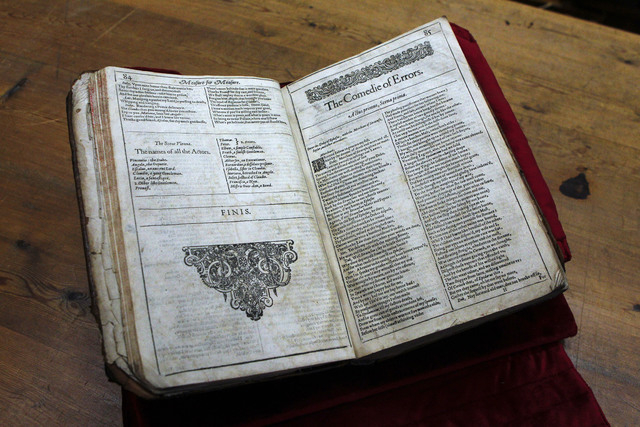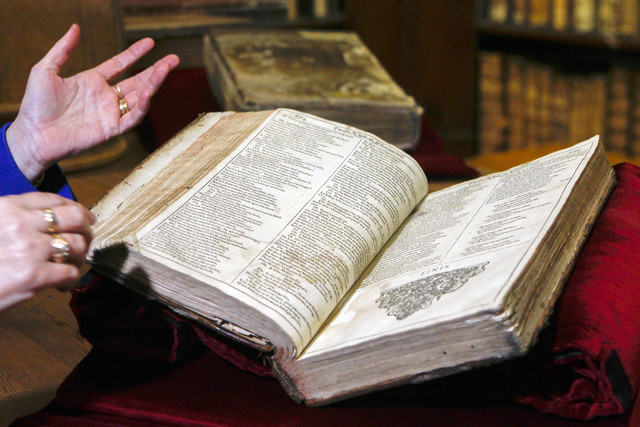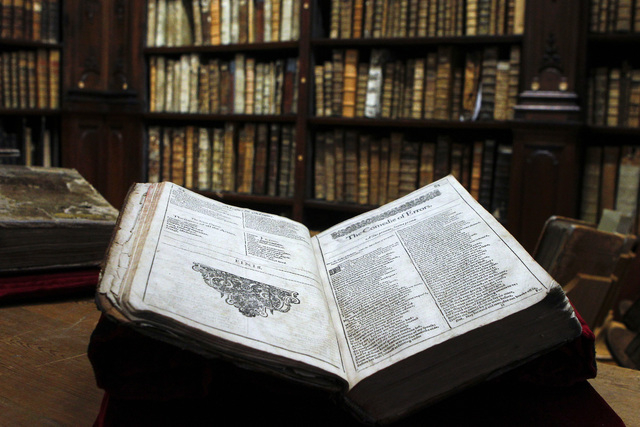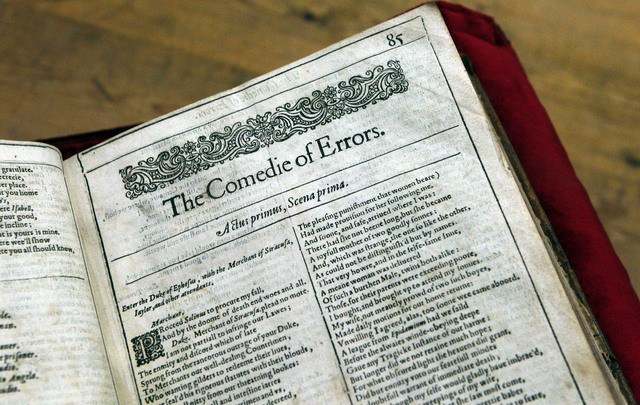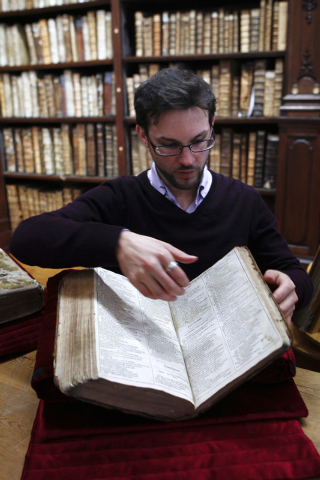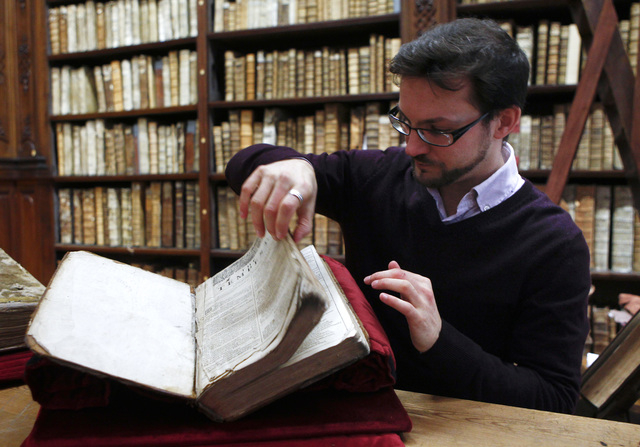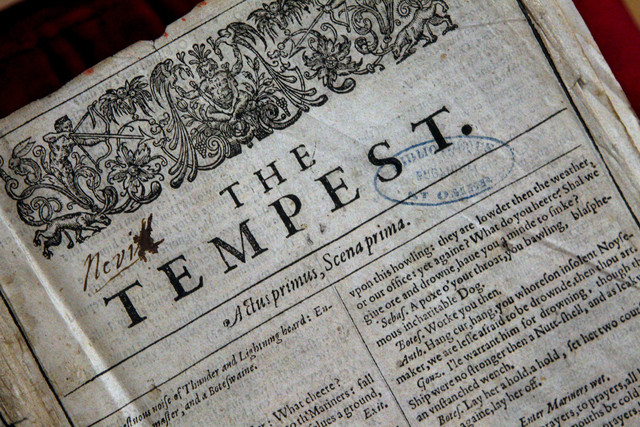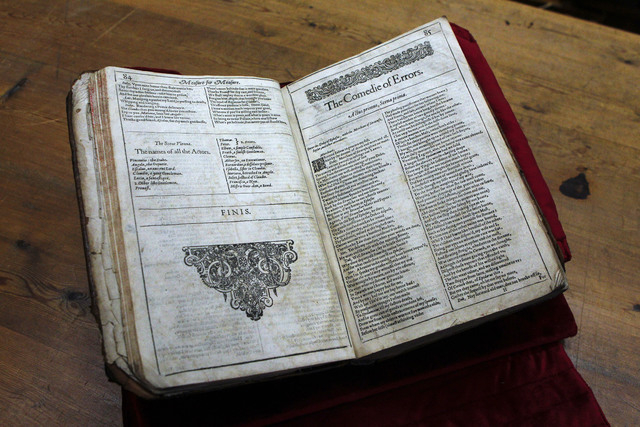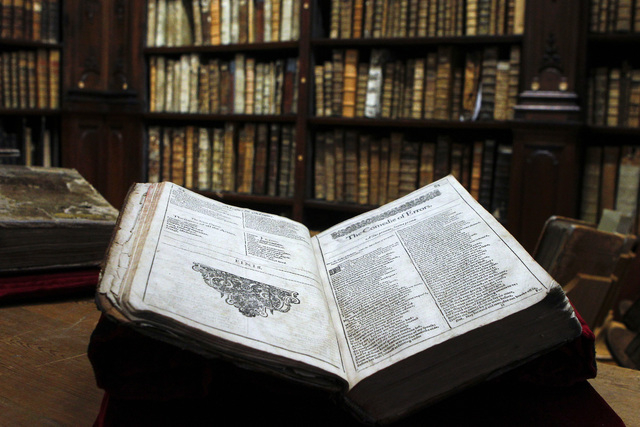UNR professor authenticates Shakespeare folio discovered in France
CARSON CITY — Would an obsession by any other name smell as sweet?
Eric Rasmussen, an English professor at the University of Nevada, Reno, has spent nearly two decades researching and cataloguing all known copies of Shakespeare’s first folio of collected works.
So when a small-town library in France needed an expert opinion on a very old document found in the library’s collection, it was Rasmussen who got the call.
Librarians working in a public library in Saint-Omer near Calais found the possible first printing of one of the world’s rarest books this fall. The New York Times reported on the find Nov. 25.
Rasmussen, who happened to be making a trip to London to curate an exhibition at the British Library on Nov. 21, took the train over the next day to inspect the folio. The Shakespeare scholar declared it without question to be the 233rd such copy identified over the centuries.
It is now the latest of about 750 copies of the Shakespeare First Folio, printed from 1621 to 1623, discovered so far, he said.
The key to identifying the first folio is the paper, he said. The copy of the folio held by the library had no title page and no identifying marks. But the first folios were printed on handmade rag paper with very identifiable watermarks, and the library’s copy fit the bill, Rasmussen said.
Most folios are actually facsimile reproductions dating from the 19th century and printed on brittle wood pulp paper, he said.
“It really only takes a nanosecond to identify a first folio,” Rasmussen said.
The folio came to the library from a Jesuit College that no longer exists.
Rasmussen, who has seen nearly all 233 copies of the folio, said each one is interesting for the notations often made in their margins by their owners. In this case, it appears as if the students attending the Jesuit College may have performed some of the plays. Changes were made to roles of female characters to make them male, he said. In one case in “Henry IV,” sweet “wench” was changed to sweet “fellow.”
“So it looks like maybe the college students at this Jesuit college performed this play and didn’t want to play women,” Rasmussen said. “That’s pretty cool.”
The small library also has a Gutenberg Bible, another of the rarest books in the world that also came from the collection held by the college, he said.
While Rasmussen also specializes in the works of Shakespeare contemporary Christopher Marlowe, the works of the Bard of Avon have become the focus of his research.
In his 1,000-page book, “The Shakespeare First Folio: A Descriptive Catalogue,” published with Anthony James West in 2012, with the help of a team of UNR graduate students, he identified 232 first folios, 72 more than were recorded in a census from more than 100 years ago.
A copy of the folio sold at auction in 2006 for $5.2 million.
Each of the copies tells a story, including one from Japan, which had a musket-ball lodged halfway through it, Rasmussen said.
The printing was a monumental task, running 900 pages in a day when printers could produce a page a day, he said. It was the first time a folio of plays had been printed. It would be similar if today someone decided to print the complete television scripts of “Everybody Loves Raymond,” put it in a leather binding and called it literature, Rasmussen said.
When Shakespeare’s plays were first printed, they were popular entertainment.
“About seven years after Shakespeare’s death, two of his fellow actors decided they wanted to bring out his collected works,” Rasmussen said. “So they printed in folio all 36 of his plays. Only half of them had appeared in print before, so if we didn’t have the first folio we wouldn’t have Julius Caesar or Macbeth, some of the high points of Western culture.
“This was the beginning of Shakespeare’s fellow actors saying, ‘You should pay attention to these,’” Rasmussen said.
Contact Sean Whaley at swhaley@reviewjournal.com or 775-687-3900. Find him on Twitter: @seanw801.
Did You Know?
The first full collection of Shakespeare’s plays wasn’t produced until seven years after his 1616 death, when two of his fellow actors, John Heminge and Henry Condell, produced the First Folio.



